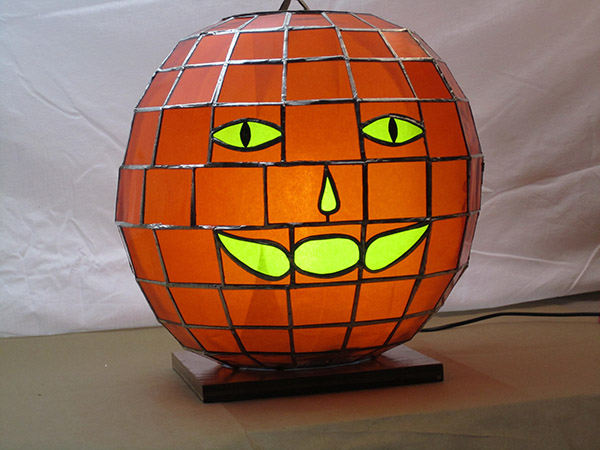
Click an image to view its enlargement
Introducing Jack. This is the beauty-contest photo, with both internal and external lights on.

Click an image to view its enlargement
Daytime appearance. The glass ball's internal light is off. The color of the eyes and mouth is masked by the sheer amount of orange everywhere else. It would probably look better with a hat; I'll have to see what I can find at Goodwill.
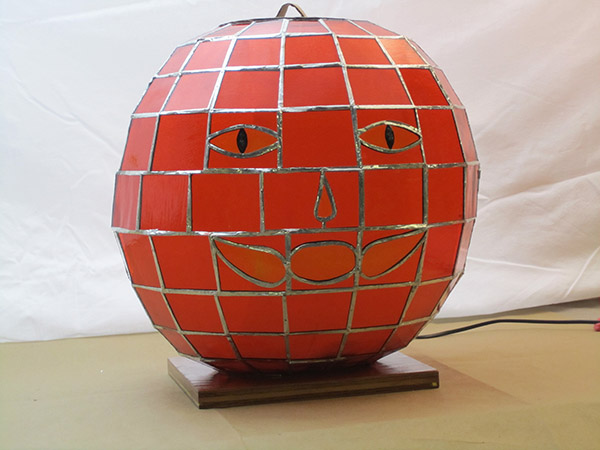
The project began with a bunch of pencil sketches, most of which got thrown away. The working design was done in Photoshop. First, I used the bezier-curve tool to draw a round-ish sagittal section that defined the envelope within which glass trapezoids would be inscribed. The cross-section drawing used the polygon tool, set to produce 16 sides. Measurements in these two drawings gave the dimensions of the trapezoid for each vertical layer, or "latitude". All the trapezoids in each latitude were to be identical.
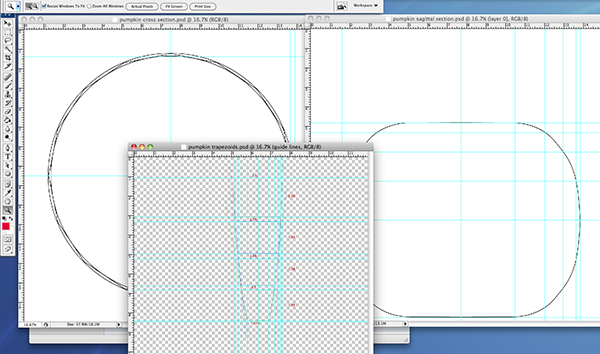
After the trapezoids were cut, assembly began by taping several trapezoids together and arranging them on scaffolding, held in place by pins and profanity. After two layers were in place, they were tack-soldered — that is, soldered just at the corners where trapezoids join. That's sufficient to lock them in position. Then more scaffolding was screwed into position and another layer was added and tack-soldered.
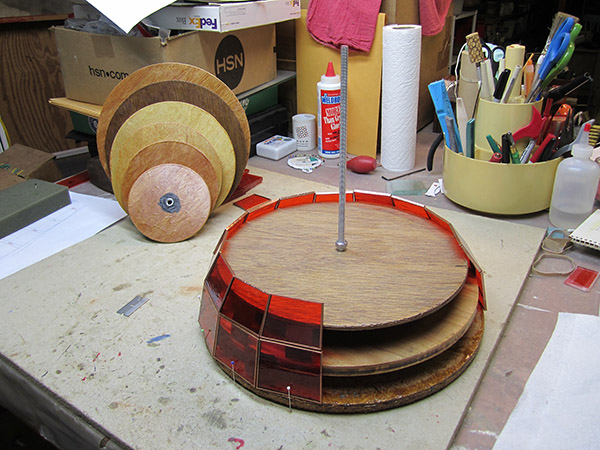
After both hemispheres had been soldered, they were positioned in a jig so that the "equatorial belt" could be soldered in. Again, the glass pieces were held in place with tape and tack-soldered. After the whole equatorial belt was installed, a final soldering pass made all the seams light-tight.
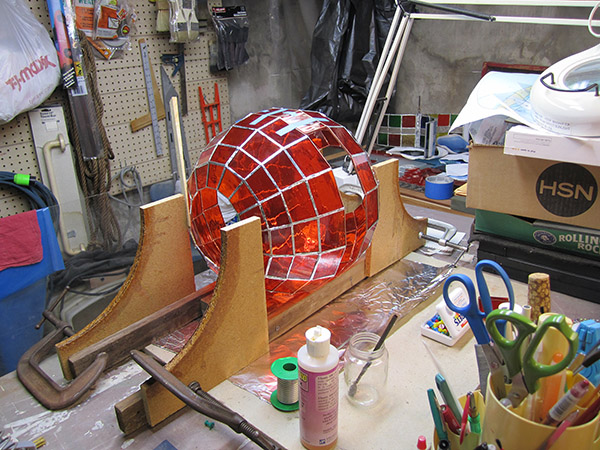
The trick when photographing glass objects is to have even, glare-free lighting that shows both the reflected and transmitted light. I hung a bedsheet from the ceiling to diffuse the lights over the worktable. This gives some shadows (important for shape definition) but doesn't create any hot spots. However, I did have to turn off all other lights in the basement. And, of course, the camera flash had to be turned off.

The light inside the jackolantern is a 4-watt fluorescent lamp. I was afraid it wouldn't be bright enough, and so I tried some of the new LED bulbs that are now getting cheap. But after testing, I decided the fluoro was plenty bright. To diffuse the light, I used two thin sheets of white packing foam, one close to the bulb and one pushed out against the glass.